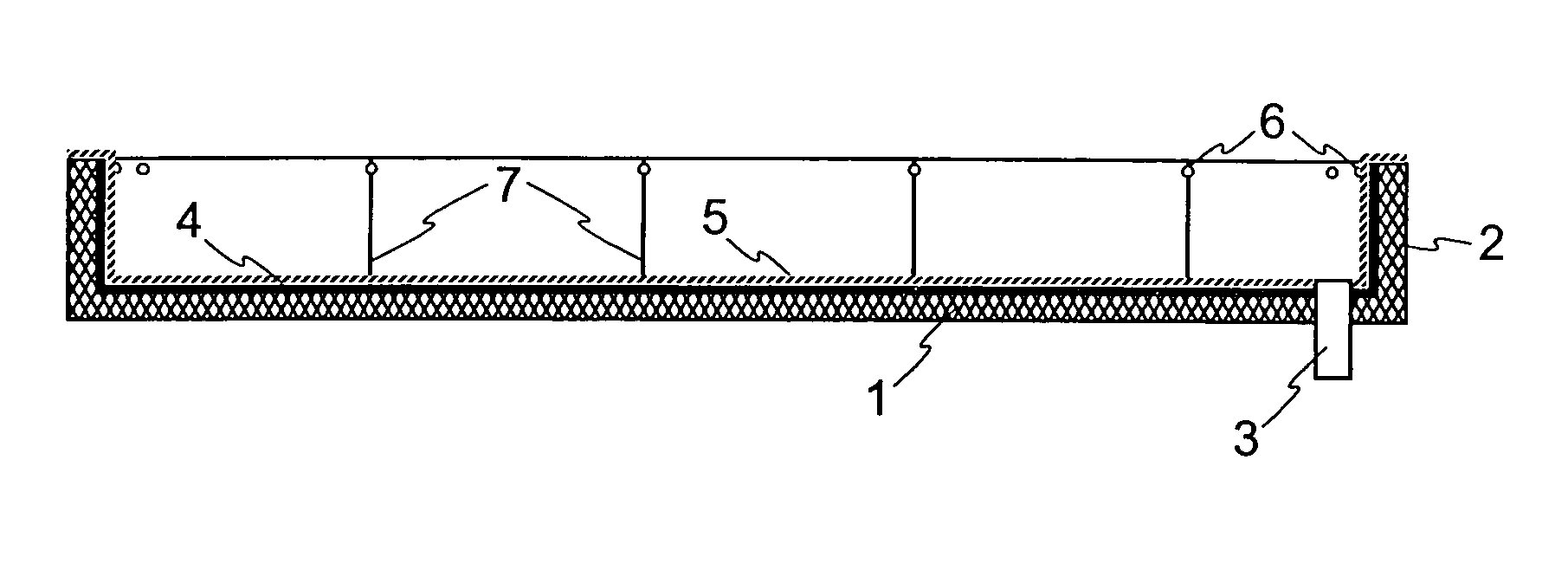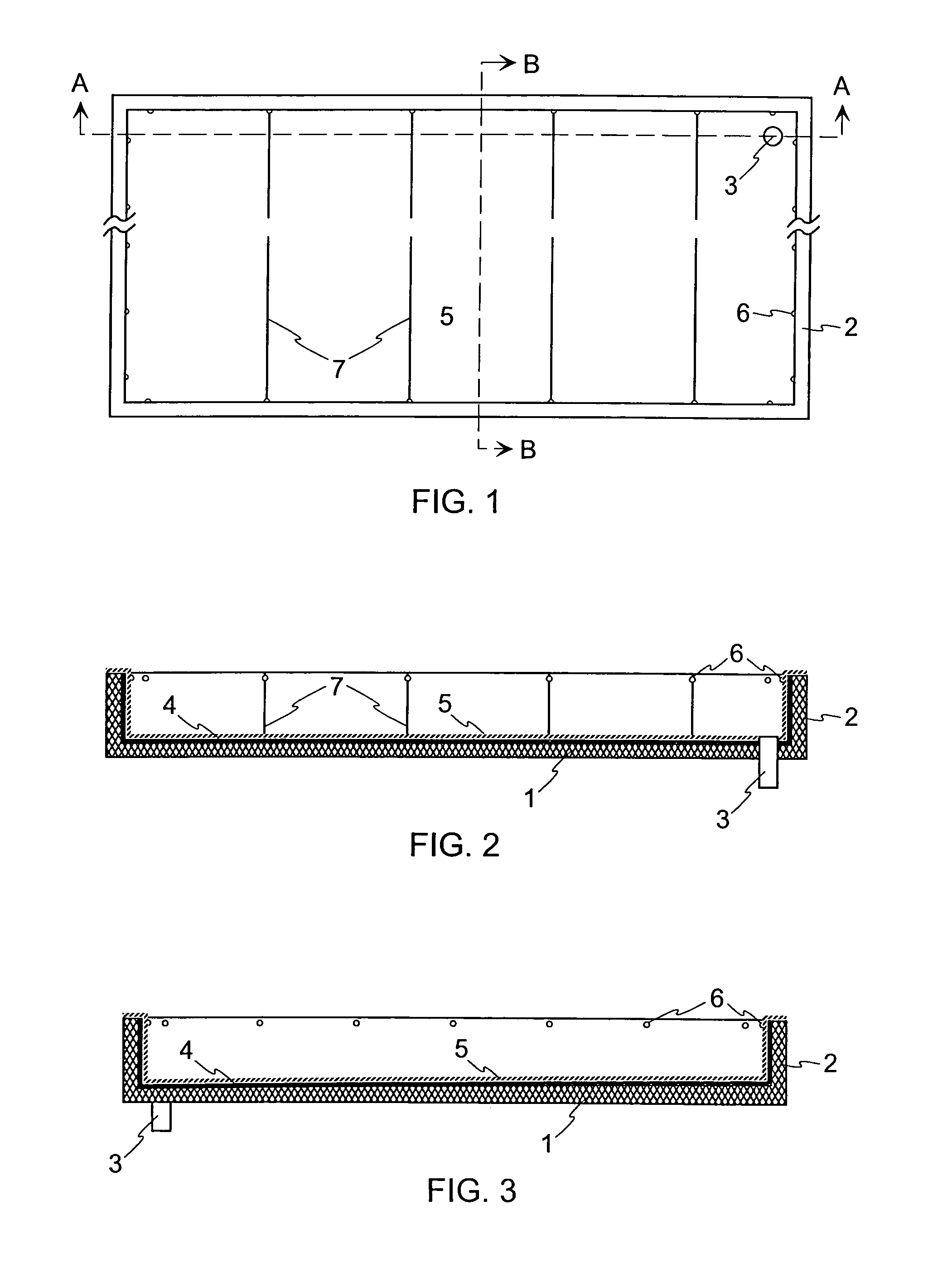Roof waterproofing system consisting of an organic resin protected by an aluminum-copolymer composite foil
- Summary
- Abstract
- Description
- Claims
- Application Information
AI Technical Summary
Benefits of technology
Problems solved by technology
Method used
Image
Examples
Embodiment Construction
[0016]With regard to these illustrations, it can be observed that the organic resin 4 is applied over the deck structure 1 and its baseboards or parapets 2. This resin 4 has high attachment power to porous and non-porous substrates, besides having self-leveling, hydrophobic and viscoelastic characteristics. In the specific case of the porous substrates, the material sticks to the surface, penetrating the external capillaries of the porous matrix and sealing them. Therefore, this material renders the porous surface totally impervious to water and, as the resin is highly flexible, it allows small structural movements in the deck without losing water tightness.
[0017]Over the substrate, previously treated with the mentioned resin, a composite film or foil 5 of aluminum laminated on both faces with thermoplastic copolymers is applied in a way so as to protect the resin 4 against the harmful action of ultraviolet solar light. Welding 7 of the several strips of the composite, in the longit...
PUM
| Property | Measurement | Unit |
|---|---|---|
| Flow rate | aaaaa | aaaaa |
| Elasticity | aaaaa | aaaaa |
Abstract
Description
Claims
Application Information
 Login to View More
Login to View More - R&D
- Intellectual Property
- Life Sciences
- Materials
- Tech Scout
- Unparalleled Data Quality
- Higher Quality Content
- 60% Fewer Hallucinations
Browse by: Latest US Patents, China's latest patents, Technical Efficacy Thesaurus, Application Domain, Technology Topic, Popular Technical Reports.
© 2025 PatSnap. All rights reserved.Legal|Privacy policy|Modern Slavery Act Transparency Statement|Sitemap|About US| Contact US: help@patsnap.com


